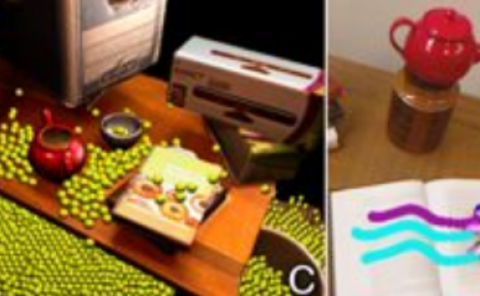Occlusion Management in VR: A Comparative Study
PubDate: August 2019
Teams: Beihang University
Writers: Lili Wang; Han Zhao; Zesheng Wang; Jian Wu; Bingqiang Li; Zhiming He; Voicu Popescu
PDF: Occlusion Management in VR: A Comparative Study

Abstract
VR applications rely on the user’s ability to explore the virtual scene efficiently. In complex scenes, occlusions limit what the user can see from a given location, and the user has to navigate the viewpoint around occluders to gain line of sight to the hidden parts of the scene. When the disoccluded regions prove to be of no interest, the user has to retrace their path, making scene exploration inefficient. Furthermore, the user might not be able to assume a viewpoint that would reveal the occluded regions due to physical limitations, such as obstacles in the real world hosting the VR application, viewpoints beyond the tracked area, or viewpoints above the user’s head that cannot be reached by walking. Several occlusion management methods have been proposed in visualization research, such as top view, X-ray, and multiperspective visualization, which help the user see more from the current position, having the potential to improve the exploration efficiency of complex scenes. This paper reports on a study that investigates the potential of these three occlusion management methods in the context of VR applications, compared to conventional navigation. Participants were required to explore two virtual scenes to purchase five items in a virtual Supermarket, and to find three people in a virtual parking garage. The task performance metrics were task completion time, total distance traveled, and total head rotation. The study also measured user spatial awareness, depth perception, and simulator sickness. The results indicate that users benefit from top view visualization which helps them learn the scene layout and helps them understand their position within the scene, but the top view does not let the user find targets easily due to occlusions in the vertical direction, and due to the small image footprint of the targets. The X-ray visualization method worked better in the garage scene, a scene with a few big occluders and a low occlusion depth complexity’ and less well in the Supermarket scene, a scene with many small occluders that create high occlusion depth complexity. The multi-perspective visualization method achieves better performance than the top view method and the X-ray method, in both scenes. There are no significant differences between the three methods and the conventional method in terms of spatial awareness, depth perception, and simulator sickness.

